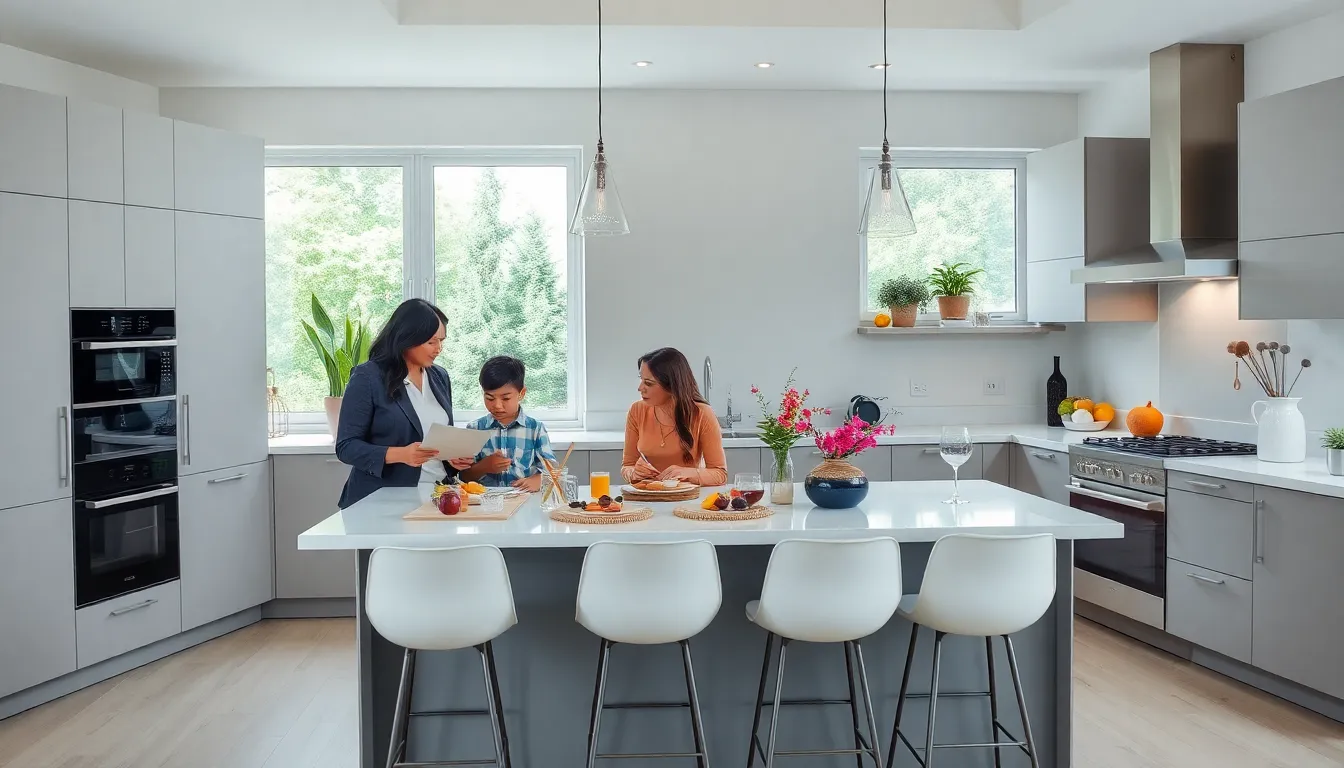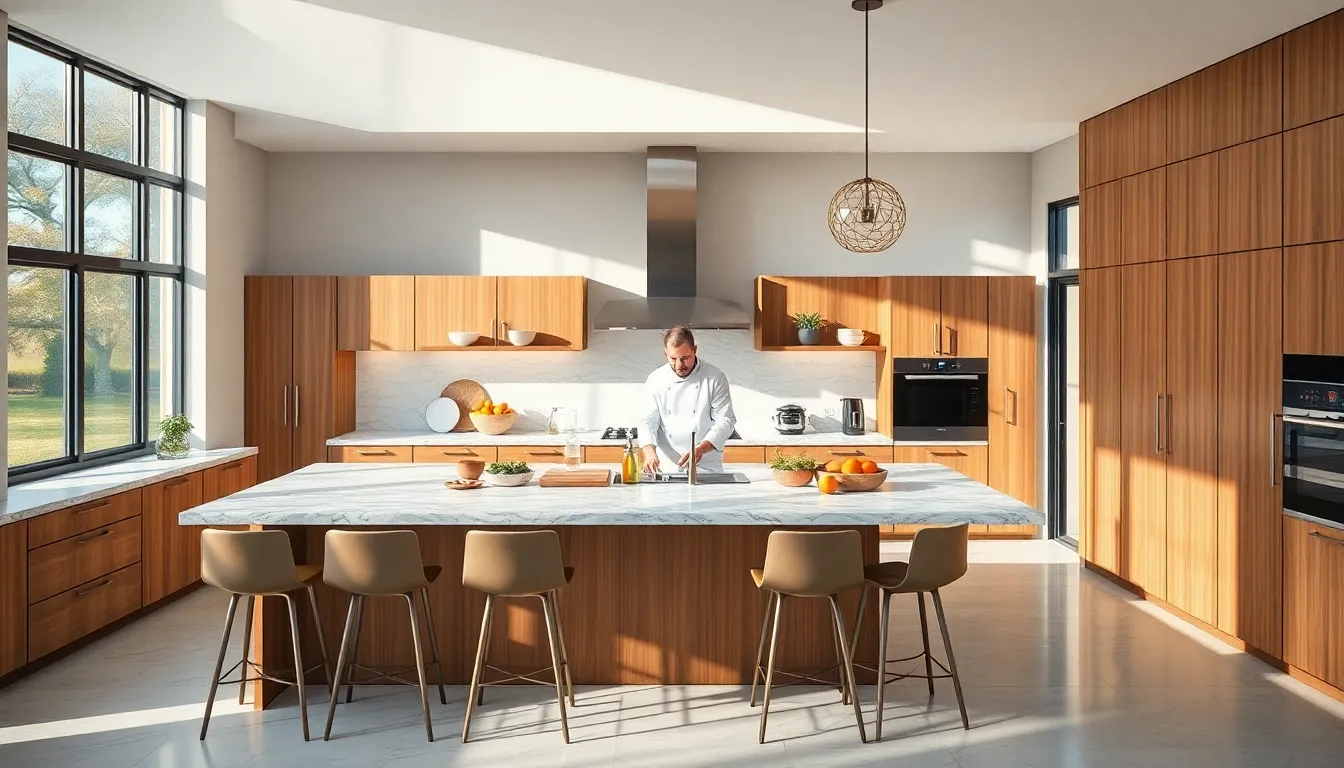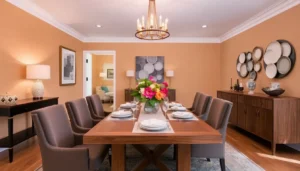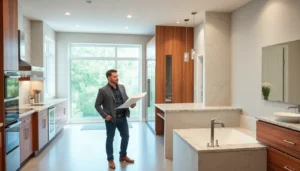When it comes to home design, the kitchen often steals the spotlight. After all, it’s where culinary magic happens, family gatherings unfold, and the occasional dance party erupts (who hasn’t bust a move while waiting for the pasta to boil?). Designing a kitchen that is both functional and stylish is essential, yet many homeowners overlook its importance. In this guide, we’ll explore the ins and outs of kitchen design, offering tips and tricks to turn your cooking space into a blend of efficiency and elegance. Ready to whip up a kitchen that’s simply delightful? Let’s immerse.
Table of Contents
ToggleThe Importance of Kitchen Design

The kitchen is often referred to as the heart of the home. It’s where meals are prepared and laughter is shared. Yet, its design can make or break the culinary experience. A well-thought-out kitchen not only maximizes space but also enhances functionality. Think about it: when cooking in a cramped kitchen, tasks become cumbersome and frustration levels rise.
Also, an inviting kitchen encourages family interaction. Whether it’s children doing assignments at the island or friends gathering for a meal, a good layout promotes connection. The first step to a successful kitchen design is recognizing these factors and planning accordingly.
Key Elements of a Functional Kitchen
To ensure a kitchen works seamlessly, certain elements must be prioritized. Here are some key components:
- Work Triangle: This layout connects the stove, sink, and refrigerator, ensuring that movement between these areas is efficient.
- Storage Solutions: Clutter is an enemy. Incorporating cabinets, drawers, and pantry options tailored to needs can help keep a kitchen organized.
- Quality Appliances: Investing in reliable, efficient appliances can save time and effort in the long run.
- Proper Lighting: Good lighting not only enhances aesthetics but also improves functionality. Natural light is ideal, but a combination of task and ambient lighting works wonders.
Each of these elements contributes to a toolkit for creating a kitchen that feels both inviting and efficient.
Incorporating Style and Aesthetics
While functionality is paramount, the visual appeal of a kitchen shouldn’t be overlooked. Here are some tips to blend style with function:
- Choose a Color Palette: Colors can set the mood. Soft neutral shades often create a calm atmosphere, while bold colors can add excitement.
- Materials Matter: Selecting high-quality materials for countertops, cabinets, and flooring can elevate aesthetic appeal. For instance, granite or quartz countertops offer durability and sophistication.
- Personal Touches: Adding your personality to the space, through artwork, plants, or unique decorations, transforms a standard kitchen into a reflection of you.
By combining these stylistic choices with functional elements, a kitchen can truly shine.
Budgeting for Your Kitchen Project
Creating your dream kitchen doesn’t have to expensive. A clear budget is key for successful renovations. Start by determining what aspects are essential versus what can wait.
- Research Costs: Familiarize yourself with average costs for appliances and materials to get a realistic picture of expenses.
- Consider DIY Options: If you’re handy, taking on small projects can save money, think about painting cabinets or installing backsplash tiles yourself, for example.
- Allow for Unexpected Expenses: Build a cushion into your budget for those inevitable surprises, because who hasn’t found an unexpected plumbing issue lurking behind the sink?
With careful planning and flexibility, budgeting for a kitchen project can be manageable.
Sustainable Kitchen Solutions
In today’s eco-conscious world, sustainability in kitchen design is more crucial than ever. Here are some ideas for creating a greener kitchen:
- Energy-Efficient Appliances: Opt for ENERGY STAR® certified appliances that consume less energy and save money on utility bills.
- Recycled Materials: Consider using countertops made from recycled glass or reclaimed wood cabinets. Not only are they environmentally friendly, but they also add unique character.
- Water-Saving Fixtures: Installing low-flow faucets and water-efficient dishwashers can make a significant impact on water usage.
By incorporating these strategies, a kitchen can be both stylish and environmentally responsible.
Real-Life Examples of Simply Kitchens
To inspire kitchen redesigns, let’s explore a few real-life examples that embody the ideals of both functionality and style:
- The Open Concept Marvel: A family in Seattle transformed their confined kitchen into an open concept, allowing for seamless integration with the dining and living areas. The result? A multifunctional space that invites family gatherings.
- Modern Farmhouse Charm: A couple in Texas opted for a rustic aesthetic with shiplap walls and vintage fixtures. This cozy atmosphere makes cooking a pleasure and evokes feelings of nostalgia.
- Eco-Friendly Chic: In California, a kitchen designed with sustainability at its core features bamboo cabinetry and recycled glass countertops, proving that eco-conscious choices can also be stylish.
These examples showcase how thoughtful design can lead to results that are not only practical but visually stunning.




